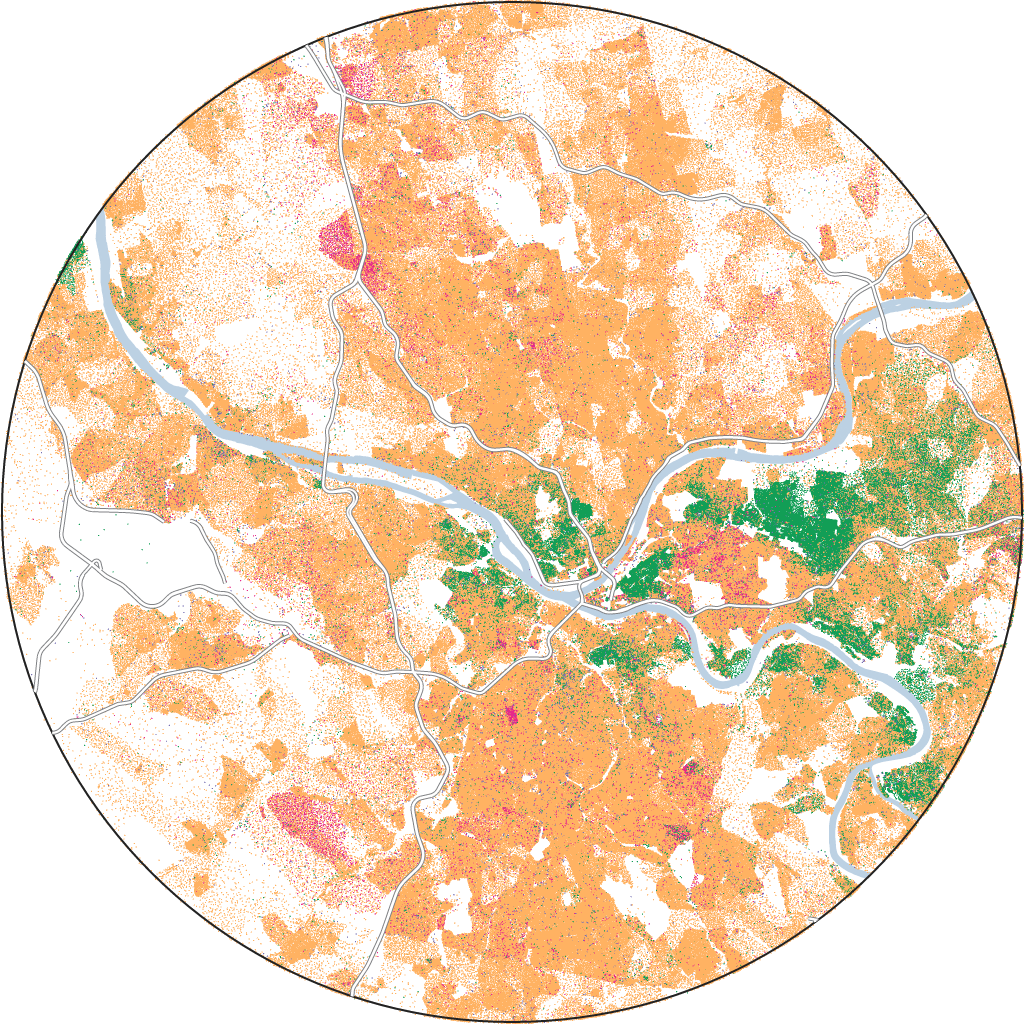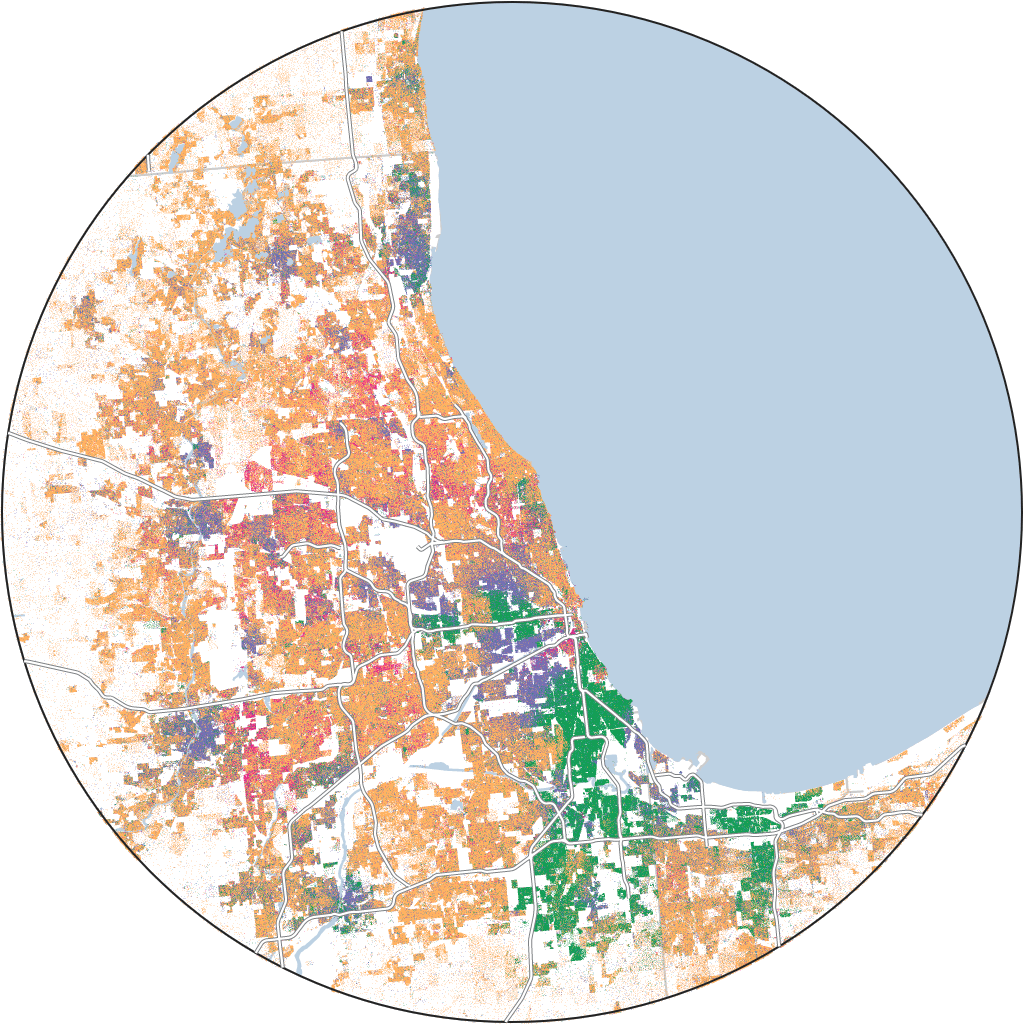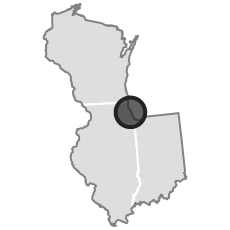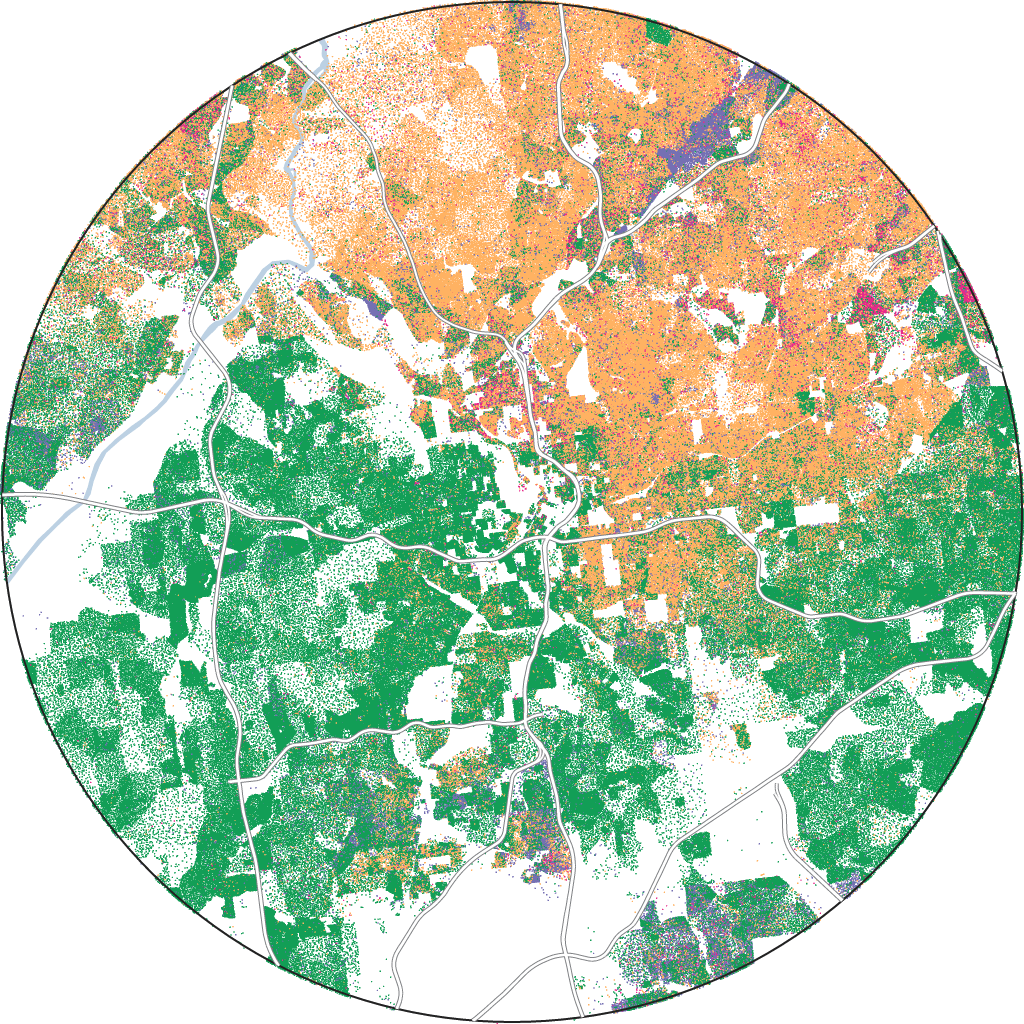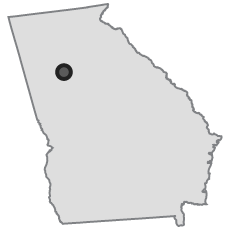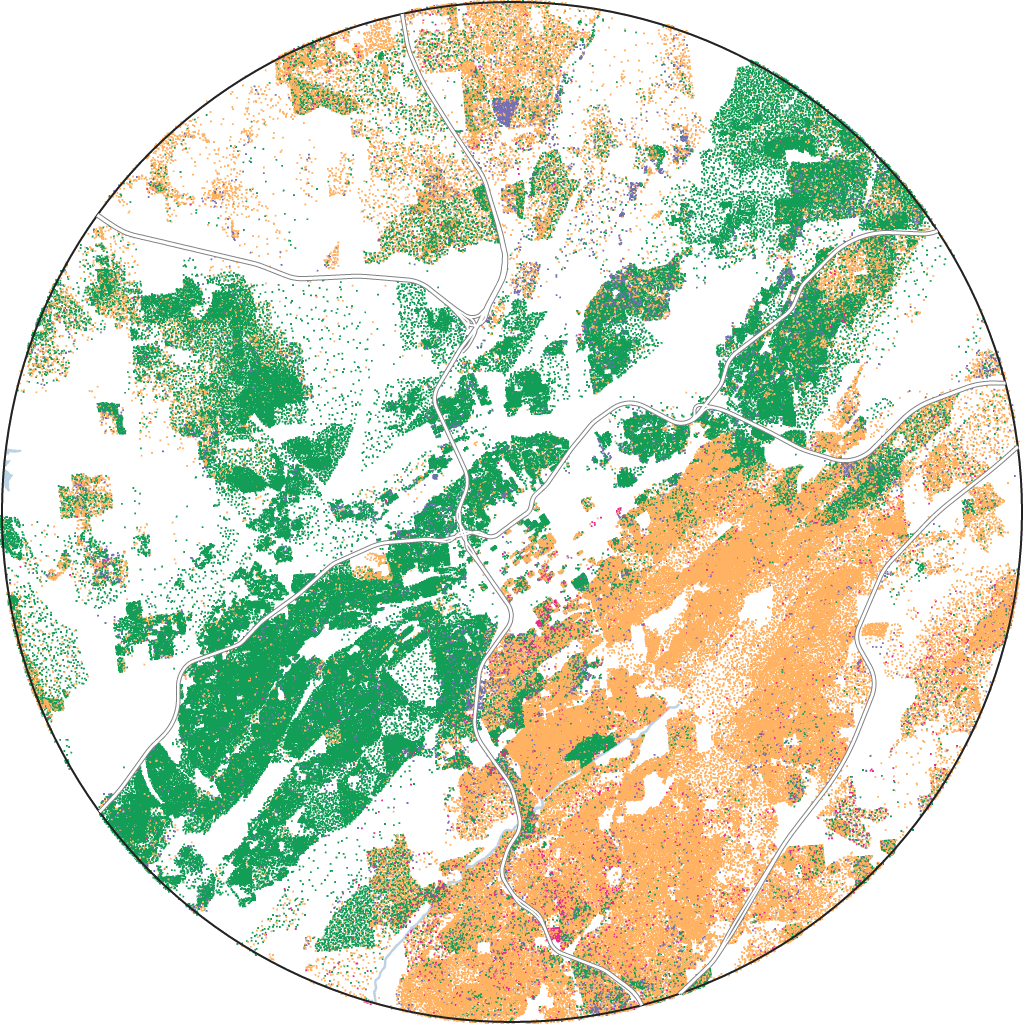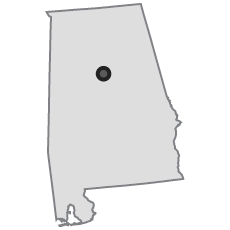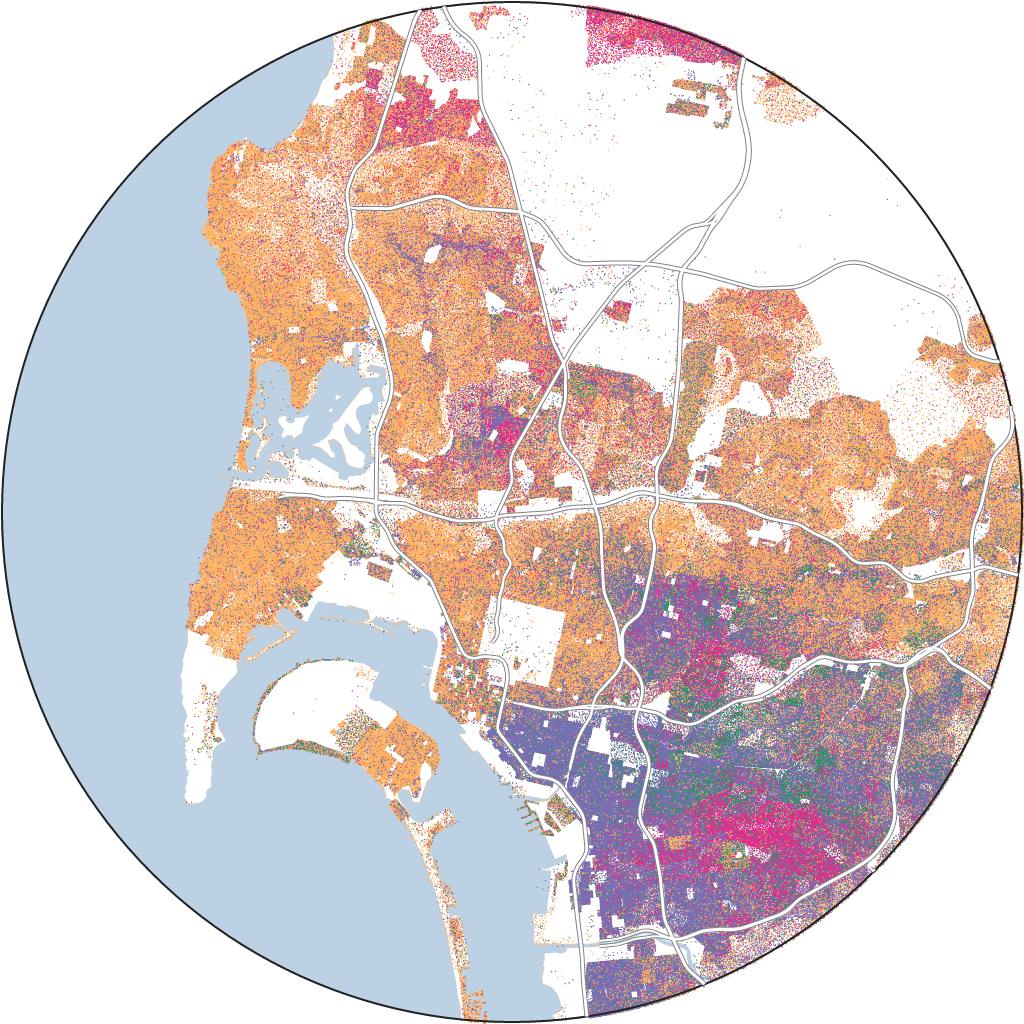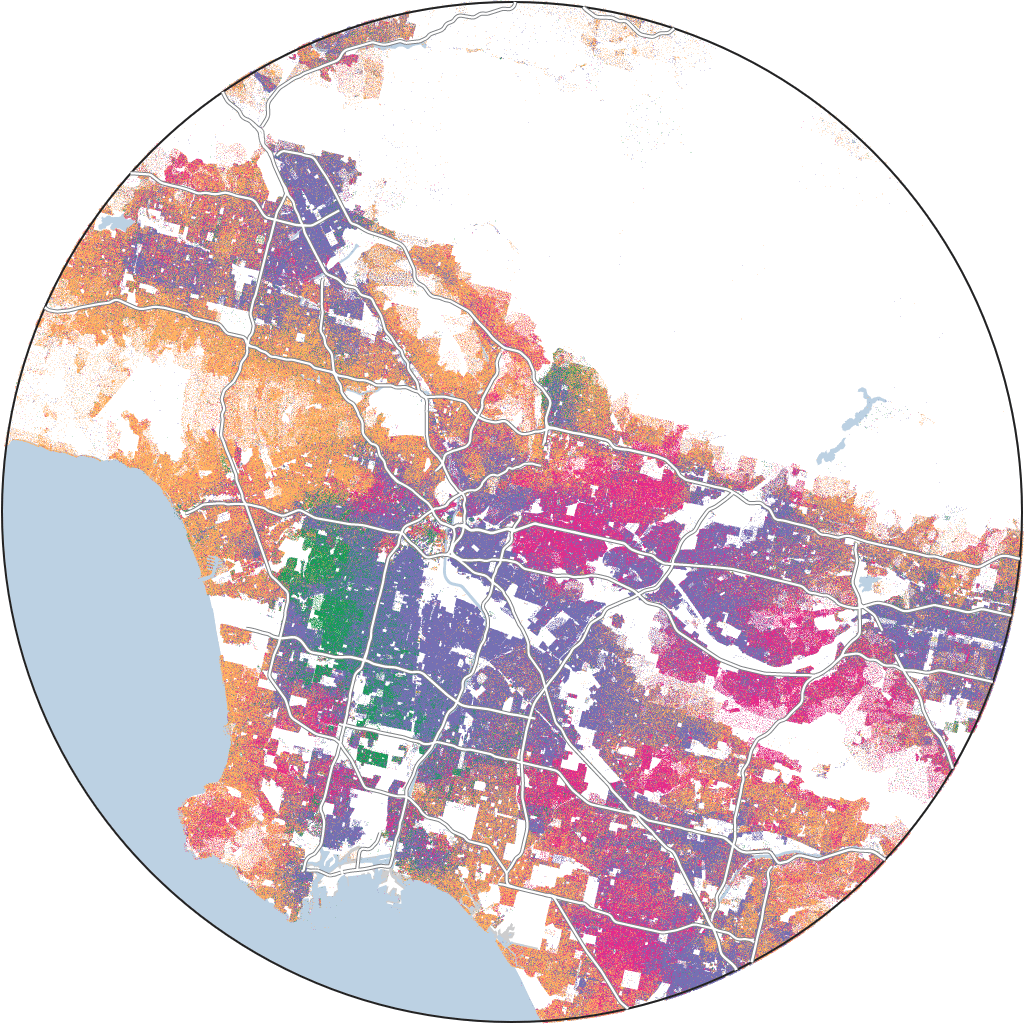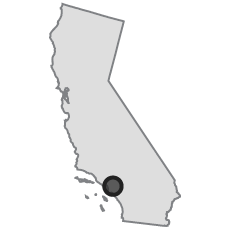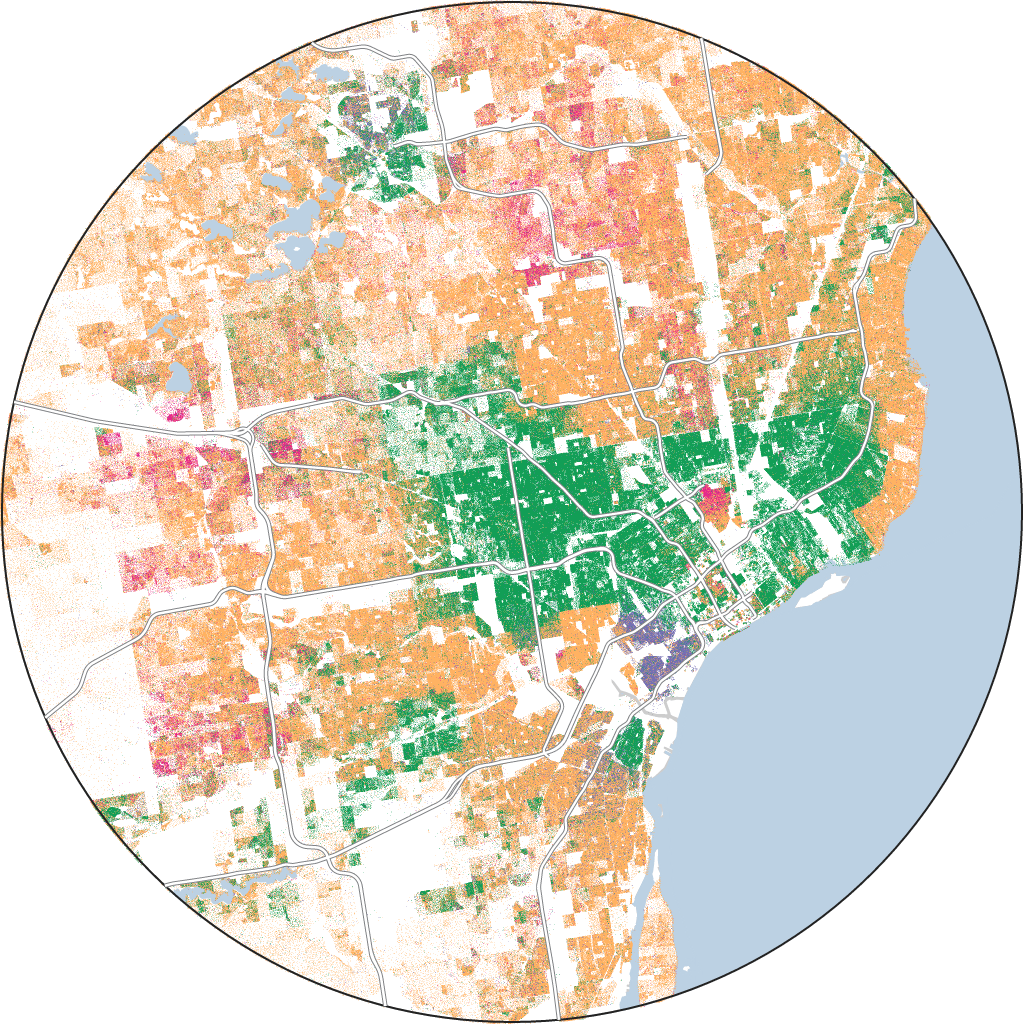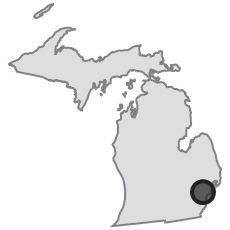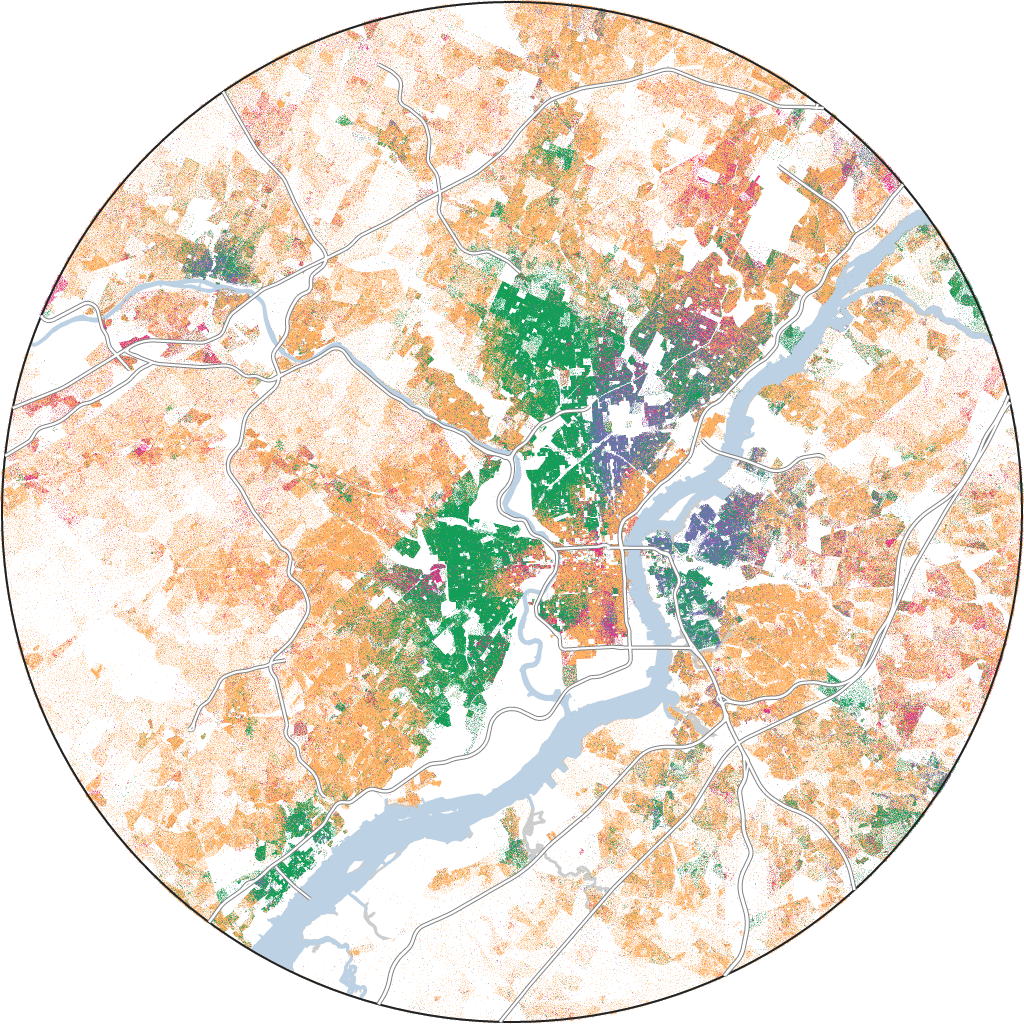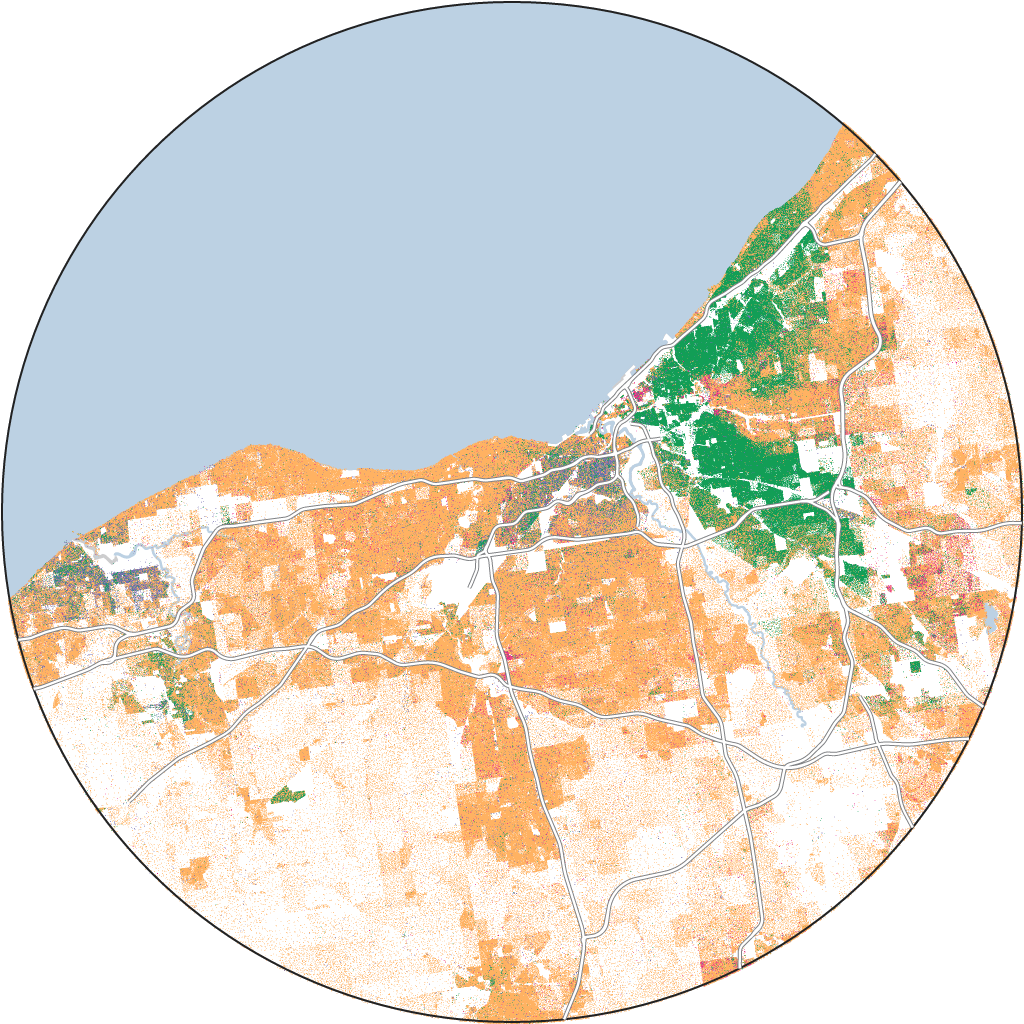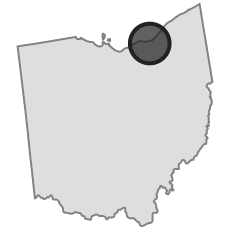

We checked out 138 previously redlined towns and located maximum have been nonetheless segregated — identical to they have been designed to be.
Housing Divide is a partnership between ABC Information and FiveThirtyEight inspecting racial inequities in housing, get right of entry to to housing and the ancient and present-day reasons of the ones inequities. See extra of our protection on Nightline and ABC Information.
In 1939, officers operating with the House House owners’ Mortgage Company (HOLC) went to Cleveland, Ohio, as a part of the company’s nationwide effort to grade neighborhoods according to their perceived mortgage-lending chance.
One of the crucial neighborhoods that officers visited — referred to now most commonly as Fairfax — was once 55 p.c Black, and as such, they gave this field a “D” grade, which means they concept Fairfax was once “hazardous,” or at prime chance for defaulting on loan loans. Of their file, HOLC officers concluded that belongings costs have been trending down because of a “sturdy coloured infiltration” and that there was once a “unfavorable trade of possession occupancy from white to coloured.” Fairfax, like maximum metropolitan neighborhoods the place Black folks lived within the early 1900s, was once then marked with crimson ink within the HOLC’s maps — a convention known as redlining.
It’s been over 80 years for the reason that traces have been drawn in Fairfax and over 50 years since using redlining was once legally banned, however the have an effect on of redlining continues to be felt in towns like Cleveland, the place redlined neighborhoods are one of the most maximum starkly segregated within the nation.
However it’s now not simply Cleveland. In its twenty years of life, the now-defunct HOLC drew masses of those maps around the nation. In overall, we analyzed the demographics of 138 metropolitan spaces the place HOLC drew maps, the use of information equipped by way of the College of Richmond’s Mapping Inequality venture and by way of the 2020 census. And we discovered that almost all previously redlined zones within the nation are nonetheless disproportionately Black, Latino or Asian when compared with their surrounding metropolitan field, whilst two-thirds of greenlined zones — neighborhoods that HOLC deemed “perfect” for loan lending — are nonetheless overwhelmingly white.
“The redlining maps are just like the Rosetta stone of American towns,” stated LaDale Winling, a professor of historical past at Virginia Tech and some of the researchers in the back of the Mapping Inequality venture. Winling instructed us that those maps have been used to codify and institutionalize practices that had already been ongoing at a extra scattershot degree inside the actual property business.
You’ll see the consequences of that institutionalized segregation obviously on this nationwide map of previously greenlined and redlined zones:
Maximum previously redlined zones are folks of colour; maximum greenlined zones are white
Estimated 2020 percentage of non-Hispanic white citizens residing inside greenlined (“perfect”) and redlined (“hazardous”) barriers drawn by way of the House House owners’ Mortgage Company between 1935-40, by way of metropolitan field
However in spite of previously redlined zones sharing a function — to disproportionately deny loans to low-income American citizens and, specifically, Black and minority American citizens — the legacy of redlining differs from town to town and area to area.
Previously redlined zones within the Northeast and Midwest are a number of the maximum segregated spaces within the nation. In the ones areas, the next share of Black American citizens are living in redlined zones when compared with the ones zones’ surrounding spaces — and the next share than can also be present in different areas of the rustic. In the meantime, within the South, previously redlined zones aren’t as segregated. However much less residential segregation doesn’t imply that the South is a extra equitable area for Black and minority American citizens, particularly given its historical past of slavery and the Jim Crow generation. Moreover, although redlining was once a housing coverage that closely centered Black American citizens, redlining has additionally affected immigrants and different minorities, specifically Latino American citizens — one thing visual nowadays in puts like California. However on the identical time, large demographic shifts, suburbanization, city renewal and gentrification have additionally modified the panorama of many of those towns. In some towns, previously redlined zones are actually whiter and extra advanced than they have been within the Nineteen Forties. In different towns, there are extra Black folks than white folks residing in previously greenlined spaces, or spaces that govt officers as soon as rated as “perfect.”
There is not any one legacy in terms of redlining. And its legacy is especially devastating as a result of, as we have been instructed by way of Stephen Menendian, assistant director of the Othering & Belonging Institute on the College of California, Berkeley, “Housing in reality is on the core of each and every expression of racial inequality in The us.”
The parable of the northern “Promised Land”
The legacy of redlining is especially pronounced within the Northeast and Midwest,elegance=”footnote-text”> the place towns like Cleveland, Pittsburgh and Chicago are house to one of the most maximum segregated previously redlined zones within the nation. This segregation is particularly entrenched in redlined towns with massive Black populations. Of the nineteen such towns in those areas, 16 have been nonetheless segregated, with over two-thirds as many Black folks residing in previously redlined spaces as within the surrounding field. White folks, in the meantime, made up not up to a 3rd of the inhabitants of previously redlined spaces and have been massively overrepresented in previously greenlined spaces.elegance=”footnote-text”>
One explanation why northern towns stay so segregated is on account of what historians name the Nice Migration and 2nd Nice Migration. From the 1910s throughout the Seventies, tens of millions of Black American citizens fled the oppressive Jim Crow South in seek of jobs in industrialized towns and a greater existence within the Northeast and Midwest. However Black American citizens didn’t to find safe haven from systemic racism in those areas, particularly when it got here to housing coverage.
In reality, students have discovered that the rise in Black American citizens in those areas resulted in rising efforts like redlining in northern metro spaces to stay Black American citizens and different immigrants in particular spaces and save you them from shifting into predominantly white neighborhoods. Because of this, Black households had little alternative to construct generational wealth.
Take Pittsburgh. It noticed an enormous uptick in its inhabitants within the early 1900s, however Black American citizens shifting in have been restricted to pre-war segregated spaces just like the Hill District, which in 1937 was once formally redlined by way of HOLC officers on account of what they described as an “infiltration” and “focus of negro and undesirables.”
Lately, the Hill District, like any neighborhoods encompassing previously redlined zones within the Metal Town, continues to be overwhelmingly segregated. Pittsburgh’s previously redlined zones have, on moderate, with regards to thrice as many Black folks residing in them as in comparison to their surrounding spaces — making Pittsburgh the second one maximum segregated redlined town within the nation,elegance=”footnote-text”> simply in the back of Cleveland.
Pittsburgh‘szones:
Pittsburgh‘s surrounding field:
One reason a space just like the Hill District continues to be so segregated is that redlining created a loss of funding in portions of Pittsburgh that persists nowadays. Ultimate yr, a crew of researchers launched a file that checked out financial institution lending information and public funding paperwork in Pittsburgh from 2007 to 2019, discovering that simply 7 p.c of house loan loans went to predominantly minority neighborhoods in that time frame, in spite of the citizens of those neighborhoods comprising nearly 21 p.c of town’s inhabitants. And out of $11.8 billion in loans to debtors, not up to 4 p.c went to Black folks.
“[Redlining] biased the place funding was once made,” Bruce Mitchell, a senior analyst on the Nationwide Group Reinvestment Coalition instructed us, with “hazardous” spaces like Hill District affected by years of forget. Mitchell stated it is this loss of funding in previously redlined spaces this is one in all redlining’s maximum devastating penalties.
Like Pittsburgh, Chicago noticed an enormous surge in its Black inhabitants as a part of the Nice Migration. Many Black folks moved to Chicago’s South Facet, north of Washington Park — the world the place a lot of Chicago’s redlines have been in the long run drawn.
On the time govt appraisers drew the ones traces, housing close to parks, lakes and swimming swimming pools was once in most cases inhabited by way of white folks, however in a single zone surrounding Washington Park appraisers famous that it have been “nearly utterly monopolized by way of the coloured race.” Appraisers concluded that Black American citizens couldn’t be “closed in” and Washington Park was once already “doomed,” in order that they drew a redline across the field of their map.
Lately, there are over 90 p.c extra Black Chicagoans in redlined zones than within the surrounding field.
Chicago‘szones:
Chicago‘s surrounding field:
How an anti-Black previous within the South shapes its gift
Within the South, maximum previously redlined spaces also are nonetheless starkly segregated — 28 of the 31 towns we analyzed.elegance=”footnote-text”> And whilst they aren’t as segregated as previously redlined zones within the North, the previously greenlined zones within the South are extra segregated than within the North. On moderate, the South has nearly two times as many white folks residing in greenlined zones when compared with the ones zones’ surrounding spaces — a far upper percentage than is observed within the North.
That’s essential for figuring out the legacy of redlining within the South as a result of slavery and Jim Crow rules have performed a far larger function within the South’s distinctive type of segregation. Winling, who was once some of the researchers in the back of the Mapping Inequality venture, instructed us that Black American citizens within the North started to transport into greenlined spaces after white populations began to escape as a result of town neighborhoods have been all of a sudden diversifying. However in some southern towns, he stated, this didn’t occur to the similar extent.
Take a town like Atlanta. Its community of Buckhead held the headquarters of the Ku Klux Klan from the early Nineteen Twenties to the mid-Thirties. Lately, Buckhead is town’s whitest and wealthiest community, and it’s additionally the place lots of the “perfect” spaces have been drawn all the way through within the overdue Thirties. And as can also be observed at the map underneath, the ones “perfect” spaces are 80 p.c white.
Atlanta‘szones:
Atlanta‘s surrounding field:
Buckhead additionally stays very segregated from the remainder of Atlanta. In reality, community citizens are actually backing an effort within the town’s legislature to create their very own town and secede from Atlanta, a majority Black town. If this have been to occur, it might be financially devastating for Atlanta for the reason that town would lose an estimated 38 p.c of its tax income.
In keeping with Andre Perry, a senior fellow at Brookings Metro and writer of “Know Your Value: Valuing Black Lives and Assets in The us’s Black Towns,” it’s those white enclaves within the South “the place energy is steadily exercised probably the most.”
A part of the best way those spaces collected energy was once throughout the South’s lengthy historical past of violent racism towards Black American citizens, particularly the ones shifting to predominantly white neighborhoods. Imagine Birmingham, Alabama, a town the place bombings towards Black citizens have been so rampant within the mid-1900s — there have been greater than 50 space bombings and burnings from the overdue Nineteen Forties till the mid-Sixties — that Birmingham become referred to as “Bombingham.”
This ongoing violence, along with redlining, intended that a lot of Birmingham’s white inhabitants was once confined to its greenlined zones. This development continues to be visual nowadays, with the proportion of white folks residing within the town’s previously greenlined zones being over two times as prime as the proportion residing within the surrounding field. In reality, in line with an ABC Information research of mortgage-lending information, folks of colour are nonetheless much less more likely to have their loans authorized in majority-white neighborhoods.
Birmingham‘szones:
Birmingham‘s surrounding field:
However portions of the South’s racial make-up are converting, albeit slowly. Because the Nineties, increasingly more Black American citizens have moved to the South — a motion demographers are terming “The New Nice Migration.” This has modified towns like Atlanta and Birmingham, that have additionally observed an inflow of Asian American citizens and different minorities, however in step with Taylor, the Princeton professor, the South’s fixation on white exclusivity in puts like Buckhead continues to be a large drawback.
“Individuals are returning to puts which are simply as segregated, simply as excluded,” Taylor stated.
“Anti-Black racism harm everybody”
The hurt redlining has brought about Black American citizens is intensive, however redlining has additionally affected different minorities within the U.S. — specifically the rustic’s rising Latino inhabitants. In some towns, govt officers at once centered Latinos with their redlining maps whilst in others, the ongoing loss of funding in previously redlined spaces has brought about disproportionate hurt to Latino communities.
Of fifty towns around the nation with massive Latino populations,elegance=”footnote-text”> we discovered that 72 p.c have segregated Latino communities residing in previously redlined spaces.
“That’s why I all the time say, anti-Black racism harm everybody,” Perry stated. “There is loads of puts the place … anti-Black racism and hate towards brown folks and different teams in reality restricted the volume of housing choices for folks of colour, and the one puts that they may be able to typically cross are previously redlined or Black neighborhoods.”
Take San Diego. Its previously redlined zones are probably the most segregated within the West, with 76 p.c extra Latinos residing in those neighborhoods in comparison to the encompassing spaces. Latinos have been centered by way of HOLC appraisers, too, as they wrote of their 1935 file that the world southeast of Fairmont Park had “many Mexicans with a undeniable development of infiltration.”
San Diego‘szones:
San Diego‘s surrounding field:
In different portions of California, appraisers used even harsher, extra racist language. In 1939, San Gabriel, a town in Los Angeles County, was once 90 p.c Mexican American, and appraisers described them as “peon Mexicans” and as a “distinctly subversive racial affect.”
Up till 1930, the U.S. census labeled Mexicans as white, however within the 1930 census, the federal government labeled them as their very own race. In keeping with Jerry González, a historian on the College of Texas at San Antonio, this allowed the U.S. govt to extra simply goal Mexican American citizens as a racial risk.
This concentrated on was once particularly transparent in redlining practices of the time. González instructed us that officers would particularly establish Mexicans residing in puts like Los Angeles, after which come with language of their stories like, “don’t promote this house to individuals now not absolutely of the Caucasian race.” González stated that language gave housing officers the versatility to extra simply discriminate.
Los Angeles‘szones:
Los Angeles‘s surrounding field:
It’s now not simply Latinos that HOLC officers centered both. Appraisers described different spaces derisively as a “melting pot … lengthy been completely blighted,” additionally classifying Asian American citizens as “subversive racial parts” in California. Lately, San Gabriel’s Asian and Latino communities are nonetheless segregated from town’s white inhabitants.
Past the crimson traces
After all, segregation in lots of towns doesn’t have compatibility smartly within previously redlined zones. This doesn’t imply, then again, that those towns have shyed away from or overcame a racist housing machine. To the contrary, housing segregation manifests in ways in which cross some distance past HOLC’s colour traces on those maps.
“The refusal of federal businesses to factor mortgages to these neighborhoods within the Thirties and 40s — that is one of the insurance policies that have been adopted,” Richard Rothstein, writer of “The Colour of Legislation,” stated. “However it does not solely decide nowadays’s panorama, and there are lots of, many different insurance policies that get neglected which are similarly essential.”
As an example, although it’s probably the most segregated towns within the nation, Detroit’s segregation doesn’t fit up with its previously redlined zones. That is largely as a result of as Black southerners moved into Detroit all the way through the Nice Migration, white Detroiters answered by way of leaving town in droves, most commonly shifting out to federally sponsored and racially homogenous suburbs — a migration that historians name “white flight.” White Detroiters went thru nice lengths to stay their rich suburbs completely white, too, with measures as excessive as development a half-mile-long concrete wall to bodily separate themselves from Black households.
Detroit‘szones:
Detroit‘s surrounding field:
In keeping with Joe Darden, a professor of geography, setting and spatial sciences at Michigan State College, the Detroit metro field continues to revel in white flight, too. As Black Detroiters transfer into predominantly white suburbs, many white Detroiters transfer away — additional perpetuating residential segregation.
“The way forward for Black suburbanization goes to be taking a look at the ones puts that was predominantly white, and turning them increasingly more to be predominantly Black,” Darden stated. “As Blacks transfer in, whites, even to at the moment, nonetheless tend to transport additional and additional out.”
In the meantime, Philadelphia is seeing the other occur: Extra white persons are shifting into its previously redlined zones. And as this happens, belongings values building up and lower-income folks, a lot of whom are Black, can not come up with the money for to stick.
This gentrification has basically shifted the place Philadelphia’s various demographics are living in order that its present-day segregation doesn’t in reality fit up towards its previously redlined zones. In 2019, a find out about by way of the Nationwide Group Reinvestment Coalition discovered that seven towns account for just about half of of all of the gentrification within the U.S., and by way of their metrics, Philadelphia was once some of the towns the place gentrification was once maximum rampant.
Philadelphia‘szones:
Philadelphia‘s surrounding field:
Lately, it’s turn out to be common amongst some Democrats to tout proposals that can treatment segregation brought about by way of redlining. However Taylor instructed us that those measures steadily fail to account for a way the maps have modified over the years. As an example, in Philadelphia, younger white folks had been ready to transport into traditionally Black neighborhoods and purchase houses by way of the use of systems related to the Group Reinvestment Act of 1977, which was once meant to treatment the wear of redlining. In reality, in line with an ABC Information research, it’s now more straightforward for white folks than folks of colour to shop for houses in traditionally nonwhite neighborhoods. In 2019, 65 p.c of the 347,000 white homebuyers who implemented for mortgages in most commonly nonwhite neighborhoods within the nation’s biggest metro spaces have been authorized, when compared with 56 p.c of 715,000 nonwhite homebuyers who gained a mortgage in those self same neighborhoods.
What’s extra, Taylor stated, merely encouraging homeownership in neighborhoods like East Germantown, the place the housing inventory is outdated and dilapidated, may saddle Black American citizens with debt. With out with the ability to fund maintenance or break out lengthy, predatory mortgages, those systems may exacerbate the housing disaster and push extra Black folks out in their neighborhoods.
“There’s no cash to be made in reasonably priced housing, and so all of the development that is occurring now are million-dollar condos, as a result of that’s the place the cash is,” Taylor stated.
Some 40 years after the primary redlining map was once drawn, redlining was once banned underneath the Truthful Housing Act of 1968. However in some ways, HOLC and the Federal Housing Management had already written the textbook for racist actual property practices.
“[The Fair Housing Act of 1968] doesn’t roll again or undo or compensate for 50 years of housing discrimination that had long gone on as much as that time,” stated Winling, the Virginia Tech historian concerned within the Mapping Inequality venture. “It’s going to take most probably some other 80 or 90 years of full of life enforcement and full of life remediation to undo that legacy.”
The legacy of redlining extends some distance past housing segregation, too. Its have an effect on can also be observed nowadays in minority neighborhoods’ get right of entry to to well being care, poorer instructional opportunties, and greater chance of local weather trade, as many of those spaces are extra vulnerable to flooding and excessive warmth. With no critical war of words of its lasting generational injury, the racial segregation brought about by way of redlining isn’t going anyplace both.
“I have a look at it as: Redlining took place. It was once the most important a part of American historical past,” Perry stated. “And we will have to reckon with the behaviors and the results in ways in which by no means bargain what redlining did. And once more, it has other tales for various towns, however redlining is part of that tale. It simply is.”
About this research
Redlining maps used on this venture have been at the beginning drawn by way of the now-defunct House House owners’ Mortgage Company (HOLC) from 1935-40 and downloaded from the Mapping Inequality venture. Person HOLC zones that fall inside the similar metropolitan field have been grouped in step with census micro- or metropolitan field definitions.elegance=”footnote-text”> A small choice of HOLC zones fractionally overlapped in supply map shapefiles; those overlaps have been carved out of the geographically higher zone.elegance=”footnote-text”>
Inhabitants and race/ethnicity information comes from the 2020 U.S. decennial census. Inhabitants counts have been aggregated from census blocks, which can be the smallest geographic census devices and be offering probably the most precision when matching census information to different geographic shapes. HOLC zones have been matched to census information by way of first figuring out which census blocks geographically intersected with every zone. Knowledge from all matching blocks was once then weighted by way of the share of the block’s overall field that intersects with that HOLC zone and summed to estimate the 2020 demographic make-up of every HOLC zone.
The encircling field for every metropolitan field’s HOLC map was once computed by way of including a ten p.c buffer radius to the mixed zones in that metropolitan field.elegance=”footnote-text”> Surrounding field inhabitants totals have been then computed by way of summing census-block inhabitants information, weighted by way of the share of every block’s overall field contained inside the surrounding field’s border.
For every metropolitan field’s HOLC map, a location quotient (LQ) — a small-area measure of segregation that particularly compares one racial/ethnic team’s share in a granular geography to its share in a bigger surrounding geography — was once calculated for mixed A-, B-, C- and D-rated zones for every racial/ethnic team. An LQ above 1 for a given racial team signifies overrepresentation in that HOLC zone when compared with the wider surrounding field, and values underneath 1 point out underrepresentation. A metropolitan field’s HOLC zones have been outlined as segregated for a minority racial/ethnic team if: (1) its LQ in D-rated zones was once more than 1 (suggesting this team was once overrepresented in redlined spaces); (2) its LQ in D-rated zones was once more than its LQ in A-rated zones (suggesting this team was once extra represented in redlined spaces than in greenlined spaces); and (3) its LQ in A-rated zones was once smaller than the white inhabitants’s LQ in A-rated zones (suggesting this team was once now not extra represented in greenlined spaces than the white inhabitants).
Inhabitants density dots have been generated for every racial/ethnic team inside a census block, with every dot representing one individual. Dots have been positioned randomly inside a census block and don’t constitute actual places however relatively the overall inhabitants of a given race/ethnicity in that block. White, Black and Asian information excludes those that indicated Hispanic or Latino ethnicity. Hispanic/Latino information comprises all who indicated Hispanic or Latino ethnicity, irrespective of race. Different race information comprises all inhabitants counts that didn’t fall underneath white, Black, Asian or Latino. The Albers Equivalent-House Conic projection, which promises spaces on one map are identical to spaces on some other map, was once used for all maps and spatial calculations.


